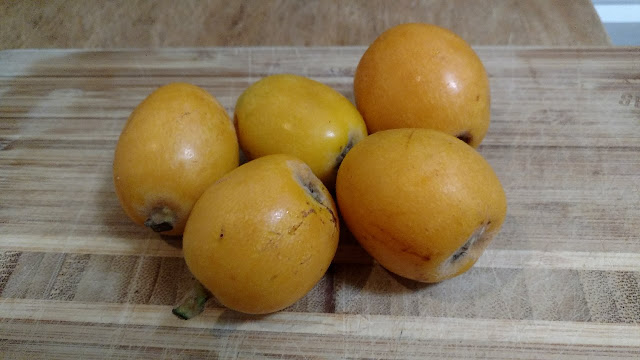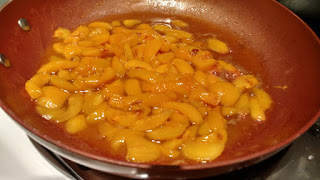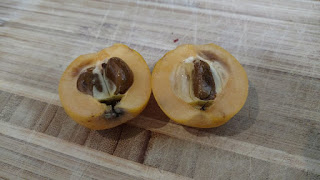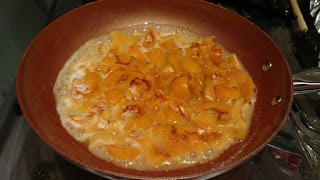
Recipe: Loquat sauce a versatile topping
 |
| Among the first stone fruit of summer, loquats can be used like peaches. (Photos: Debbie Arrington |
The first loquats I ever ate grew on a mystery tree that sprouted in the back of our Long Beach yard. (I assumed it was planted by birds.)
The fast-growing tree had interesting, textured foliage, making it a handsome volunteer. The roundish yellow fruit were a bonus.
But what to do with them? First, remember loquats have nothing to do with kumquats. Think peach, not citrus.
Loquats seem to be all big brown seeds, wrapped in juicy fruit. The flesh is tangy, almost tart, until fully ripe when loquats become honey sweet.
Nicknamed Japanese plum, the loquat has been cultivated in Japan for more than a thousand years. Native to China, it’s also very popular in Korea, India and Pakistan. Loquat comes in several varieties, most 1 to 2 inches long and born in clusters. The skin may be smooth or downy, yellow or orange or blushed with red. The flesh ranges from creamy white to apricot orange.
Loquats are among the first stone fruit of spring, but they have a big head start. With fragrant white flowers, the trees bloom in October or November. If the winter is mild, the loquats ripen in April and May.
Loquats have a tropical taste; part peach, citrus and mango. Such a combination is worth the effort it takes to peel and seed these small fruit.
 |
| Loquat sauce goes equally well in sweet or savory dishes. |
As for what to do with them, loquats can substitute for peaches in a wide range of recipes. But I think they’re best when their individuality is allowed to stand out, complementing that sweet-tart tropical taste.
This sauce is equally at home on top of pork tenderloin or vanilla ice cream. It also works well with grilled chicken, roast duck or flan.
Experiment with spices. For savory dishes, add ¼ teaspoon of red chili flakes or ground ginger along with the jelly.
Also, try substituting ½ cup fresh strawberries for half the sliced loquats, then use strawberry jam as the sweetener; a very good combination with grilled pork or pound cake.
 |
| The big seeds are a distinguishing feature of loquats. |
Quick loquat sauce
Makes about 1 cup
Ingredients:
1 cup loquats, peeled, seeded and sliced
Juice of ½ orange (about ¼ cup)
2 tablespoons butter
2 tablespoons pear jelly, strawberry jam or orange marmalade
Instructions :
 |
| Once the ingredients are in the pan, the sauce goes quickly. |
Comments
0 comments have been posted.Sacramento Digs Gardening to your inbox.
Sites We Like
Garden Checklist for week of July 21
Your garden needs you!
* Keep your vegetable garden watered, mulched and weeded. Water before 8 a.m. to reduce the chance of fungal infection and to conserve moisture.
* Feed vegetable plants bone meal, rock phosphate or other fertilizers high in phosphate to stimulate more blooms and fruiting. (But wait until daily high temperatures drop out of the 100s.)
* Don’t let tomatoes wilt or dry out completely. Give tomatoes a deep watering two to three times a week.
* Harvest vegetables promptly to encourage plants to produce more. Squash especially tends to grow rapidly in hot weather. Keep an eye on zucchini.
* Pinch back chrysanthemums for bushy plants and more flowers in September.
* Remove spent flowers from roses, daylilies and other bloomers as they finish flowering.
* Pinch off blooms from basil so the plant will grow more leaves.
* Cut back lavender after flowering to promote a second bloom.
* It's not too late to add a splash of color. Plant petunias, snapdragons, zinnias and marigolds.
* From seed, plant corn, pumpkins, radishes, winter squash and sunflowers.